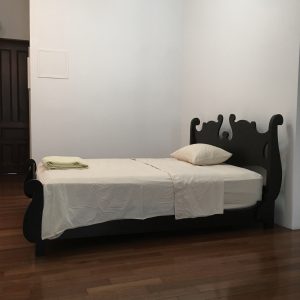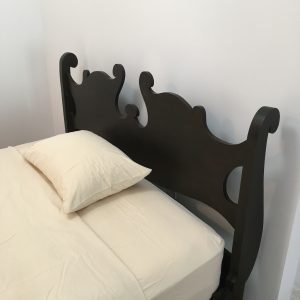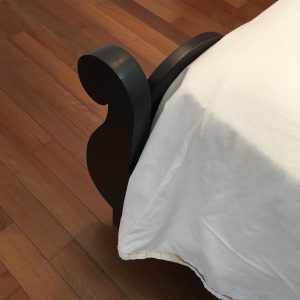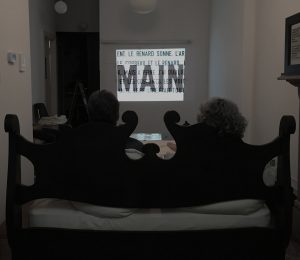Laziness





Broodthaers Society of America
520 West 143rd Street
New York, New York 10031
I don’t even know whether I’m lazy, I might well be. But the question could just as well be put the other way around: why is such and such a person hardworking?
—Marcel Broodthaers, 1976
The Broodthaers Society of America was pleased to announce an ongoing performance event on the subject of laziness. The event was accessible beginning Monday, June 21st and continued through Sunday, August 1st.
The setting for the event was comprised of three parts: a bespoke queen-size bed installed in the gallery of the Broodthaers Society for the duration of the exhibition; an online portal through which willing participants could book occupancy of the bed during regular business hours; and new scholarship around two interviews in which the success of Marcel Broodthaers as a visual artist was largely attributed to his laziness.
In the first interview—translated here for the first time by art critic and curator Nora Kovacs—plus minus zero art journal editor Stéphane Rona asked Parisian art critic Otto Hahn to share his thoughts regarding Marcel Broodthaers on the occasion of Broodthaers’ retrospective at the Centre National d’Art Contemporain, Paris. Throughout the exchange, Rona and Hahn are by turns dismissive and incredulous that such a “personalité” as Broodthaers could be fêted at the CNAC.
Piqued by the tone of this interview, Broodthaers demanded equal time. Rona obliged by conducting a corresponding interview with him for publication in the next issue of plus minus zero, but, alas, Broodthaers died three days before it was scheduled to hit the newsstands. Although this final interview by Broodthaers is well known, Laziness marks the first time it was be published in tandem, in English, with the Rona and Hahn conversation that inspired it. A fourth component of Laziness—the show’s ‘hidden track’ so to speak—was a first edition of the announcement with which Broodthaers’ infamously launched his career as a visual artist, the silkscreened magazine pages on which he wondered aloud whether or not he, too, might not sell something and succeed in life.
Therein laid—and continues to lie—the rub. As summer began and the sixteen-ton gears of the artworld begin to groan and turn and reengage—urging us back, back to work, back to school, back to attention-giving, back to building back better the neonormalcy of a more diverse and inclusive neoliberalism—what to make of success and resistance? Of success as resistance? Is that even possible now? Yes, we are aware that laziness is a privileged object of consideration, a subject position that is practically unthinkable for entire swaths of the art community, let alone humanity. Nonetheless, with Marcel Broodthaers in mind, this show encouraged us to consider—even perform—the “many different components entering into these definitions of laziness and work.”
Laziness the publication is here
a followup exhibition, Laziness: a coda, is here